Kieta Jackson fashions intriguing sculptured artefacts using woven metal strands and sheet copper that weathers over time.
She weaves fine gauge wire on a loom to produce a tactile fabric that is both hard and soft at the same time. This material is then manipulated into sculpted shapes reminiscent of museum archaeological treasures or beach finds shaped by the sea. Her methods include distressing of the fabric and leaving loose threads to suggest corrosion and ageing of the piece.
A lifelong interest in archaeological relics and unusual objects shapes her work.
Kieta earned her degree in Textile Art at Norwich School of Art and Design in 1999. She was awarded a Distinction at the 5th Baltic Biennial of Miniature Weavers; Poland. Her published works include Jac Scott’s book ‘Textile Perspective in Mixed Media Sculptures’ (2003), Fibre Art Magazine (Spring 2015) and Peripheral ARTeries (2017).
In this interview, you’ll learn how she developed her production processes and how imperfect shapes and forms inspire her. She talks about her latest projects and shares how she likes to explore techniques from all areas of art to develop new ways of creating her textured sculptures.
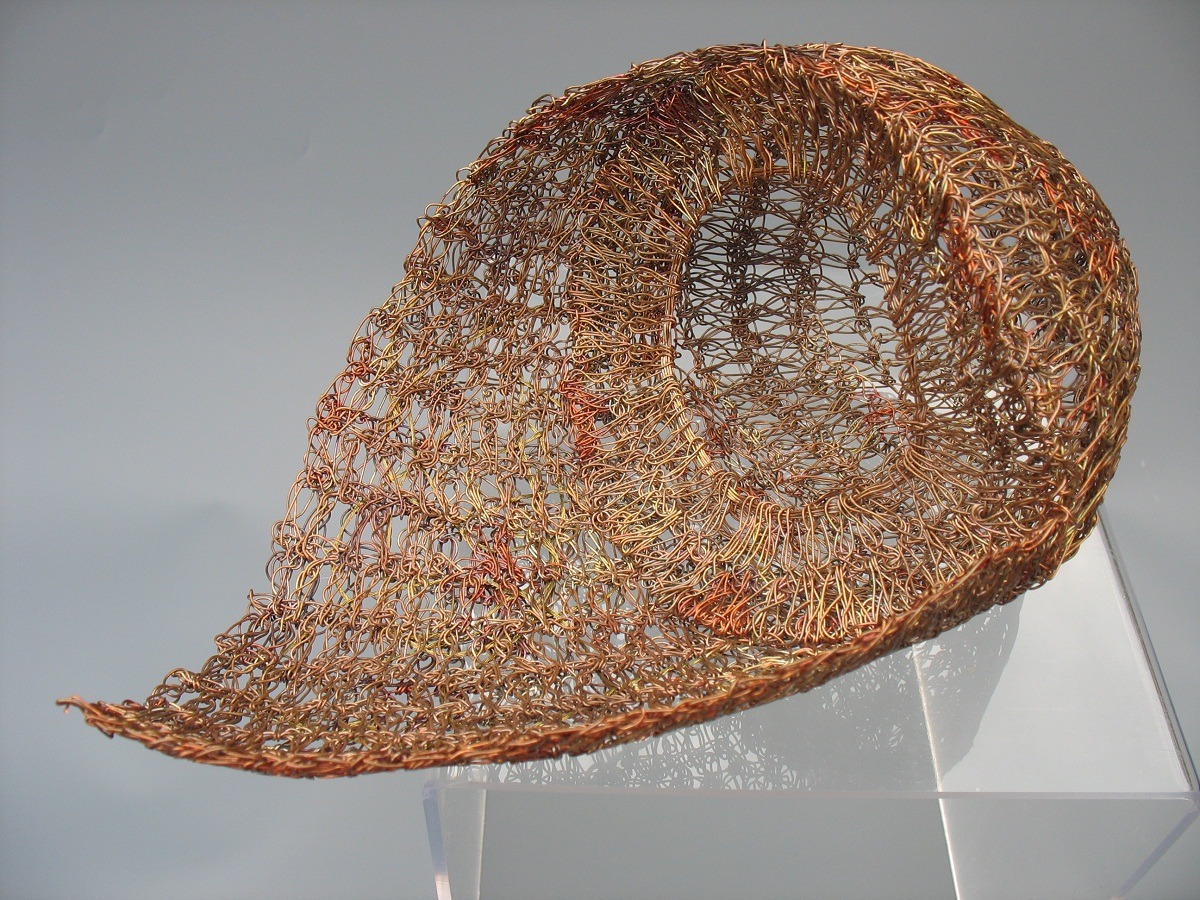
Exploring weaving with recycled copper wire
TextileArtist.org: What initially attracted you to textiles as a medium? How was your imagination captured?
Kieta Jackson: I grew up with textile creatives all around me. My grandmother taught me how to knit, my mother taught me how to crochet and my father demonstrated knot and canvas work.
When I was eight years old we moved to Exmoor in North Devon, with its rugged landscape and natural surroundings. This is where I began to build outdoor shelters and explore the countryside around me.
I collected sheep wool off barbed wire fencing and added it to combed-out hair from our dog. I used my thumb and index finger to spin this into small lengths of yarn ready to knit or crochet.
Experimenting with textiles became an instinctive process. This developed into the use of metal wires. I originally sourced my materials from British Telecom as they were changing all the underground cabling in the early nineties, so I recycled them to produce my work.
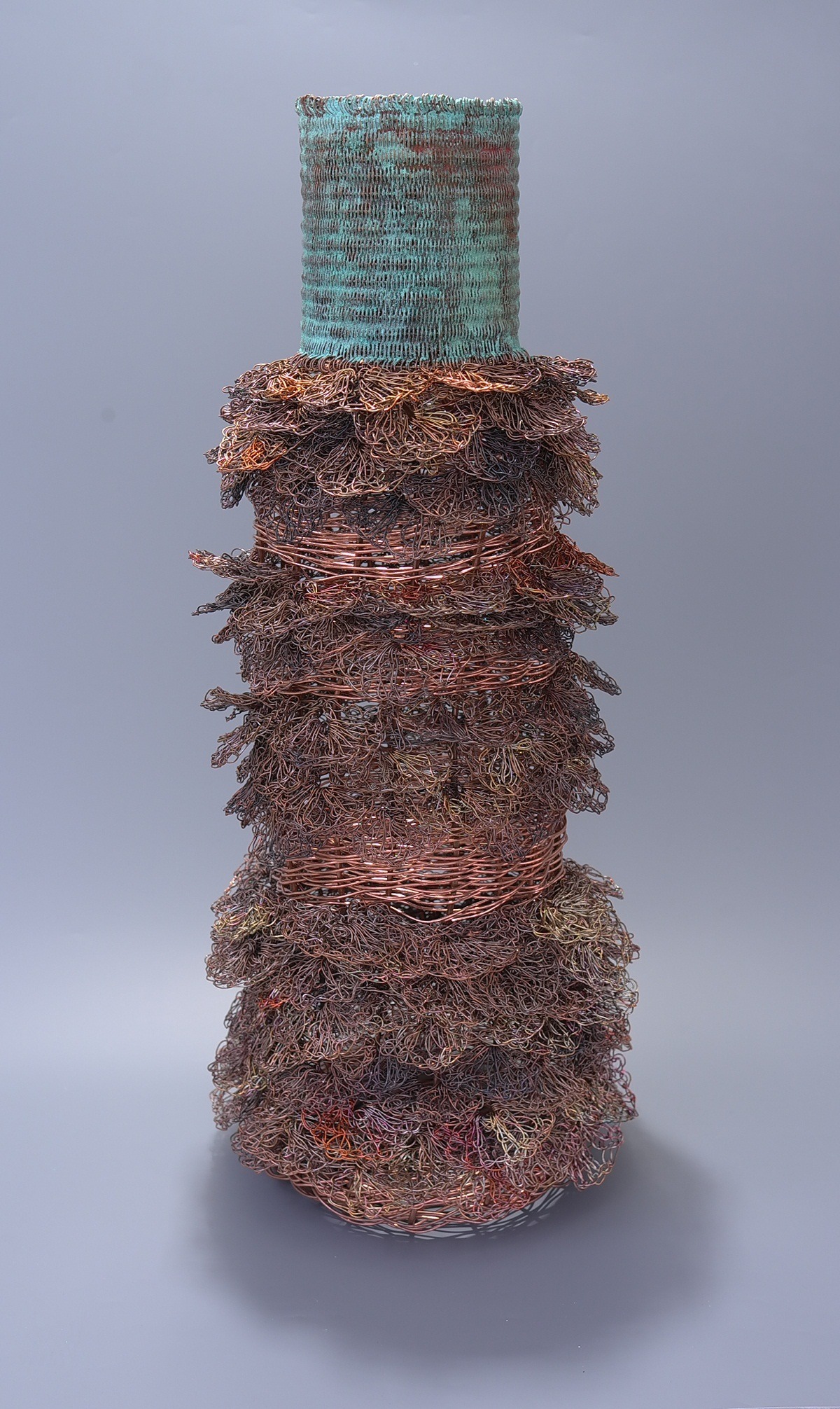
What or who were your early influences and how has your life/upbringing influenced your work?
My parents collected artefacts and curiosities from around the world. My father was a skipper in the Merchant Navy, visiting many countries. He brought home many objects of art and crafts that caught his eye. Mum worked in antique shops and stately homes and was surrounded by treasures from the past.
I grew up in a house full of unusual objects, antiques and tribal artefacts. On a subconscious level, they have influenced my making process and notions of beauty in my work.
Early inspirations include the structure and pattern of fish traps and the magical and mystical objects of oceanic art, especially those from the islands and shores surrounding Papua New Guinea. This area inspired my parents so much that I was named ‘Kieta’ after the main port on Bougainville Island of the Solomon Islands Archipelago.
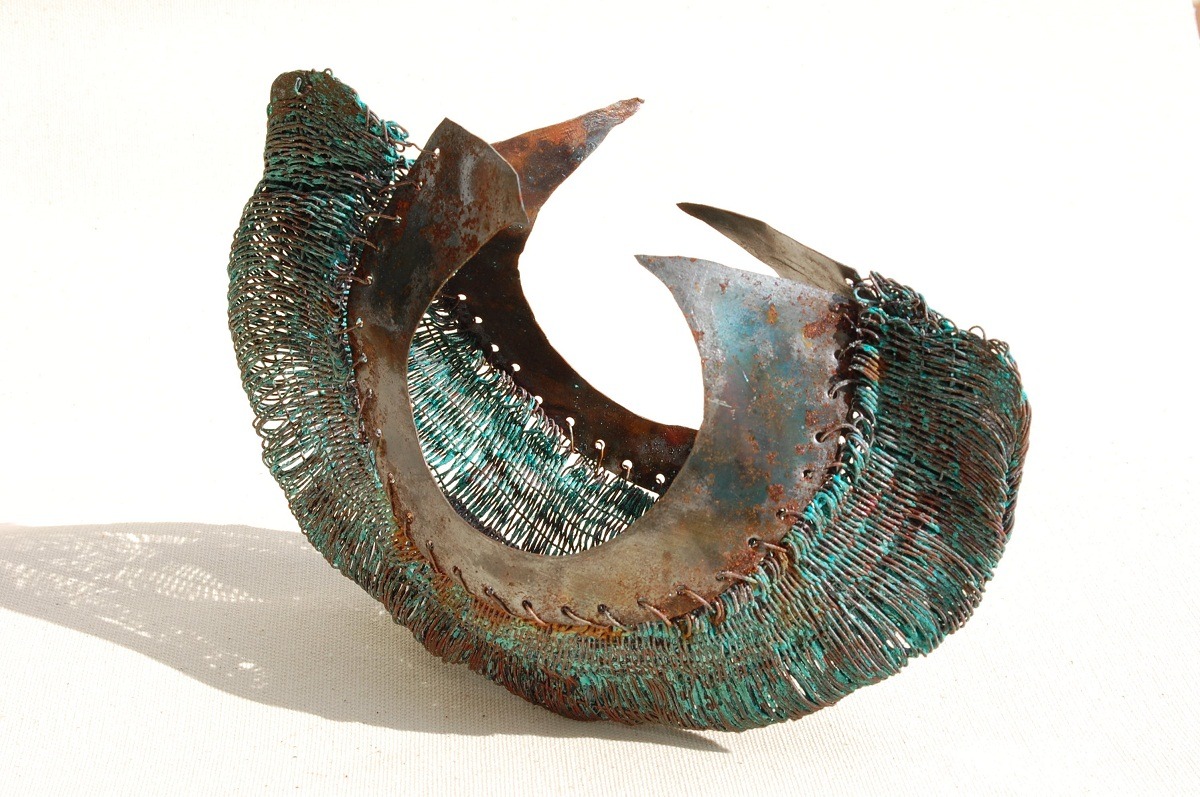
What was your route to becoming an artist?
I cannot remember wanting to be anything other than an artist. I left school and went straight into full-time art education which led to a degree in Textile Art at Norwich School of Art and Design.
During my degree course I got to grips with warping up a weaving loom and quite quickly I started to weave in metal. I loved this new way of using wire as a textile medium.
At the same time, I enrolled onto an evening class in silver and precious metalwork, which enabled me to start annealing and softening the metal fabrics I had woven. There seemed to be no boundaries to manipulating my woven fabrics into forms and structures.
After my final degree show in 1999, I was accepted by Rural Arts England for the ‘Cutting Threads’ exhibition, a two-month exhibition travelling around rural East Anglia. My artistic journey had taken a positive step in the right direction so soon after graduating. It was an exciting time.
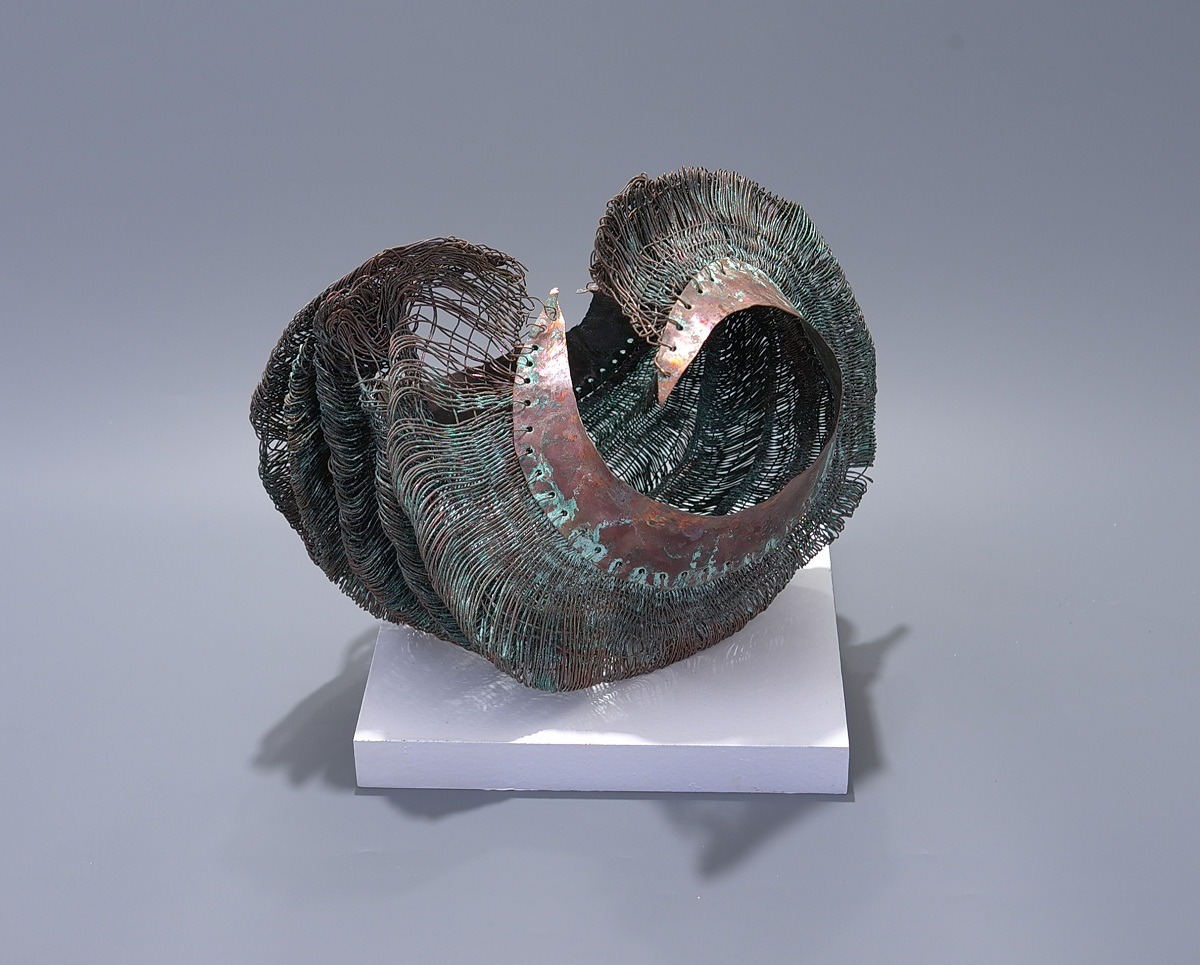
Imperfect shapes and spontaneous design
Tell us about your process from conception to creation
I draw inspiration from my surroundings but often cannot identify where the ideas for a sculpted form have materialised from. It is more a subconscious evolution.
Some of my works have a similarity to my collection of ceramics. It may be that the reason I was attracted to the ceramics in the first place was the unusual structural forms.
A preference for the unusual is perhaps the running theme in my work or at least explains my thought processes in designing my sculptures. I never aim for a perfect or symmetrical shape.
It is rather an intuitive, spontaneous process of working. My most natural and instinctive ideas have always had a sense of bringing the past into the present.
I try to create a harmonious relationship with material and forms. My sculptures resonate of found artefacts, archaeological remains and elements from the sea.
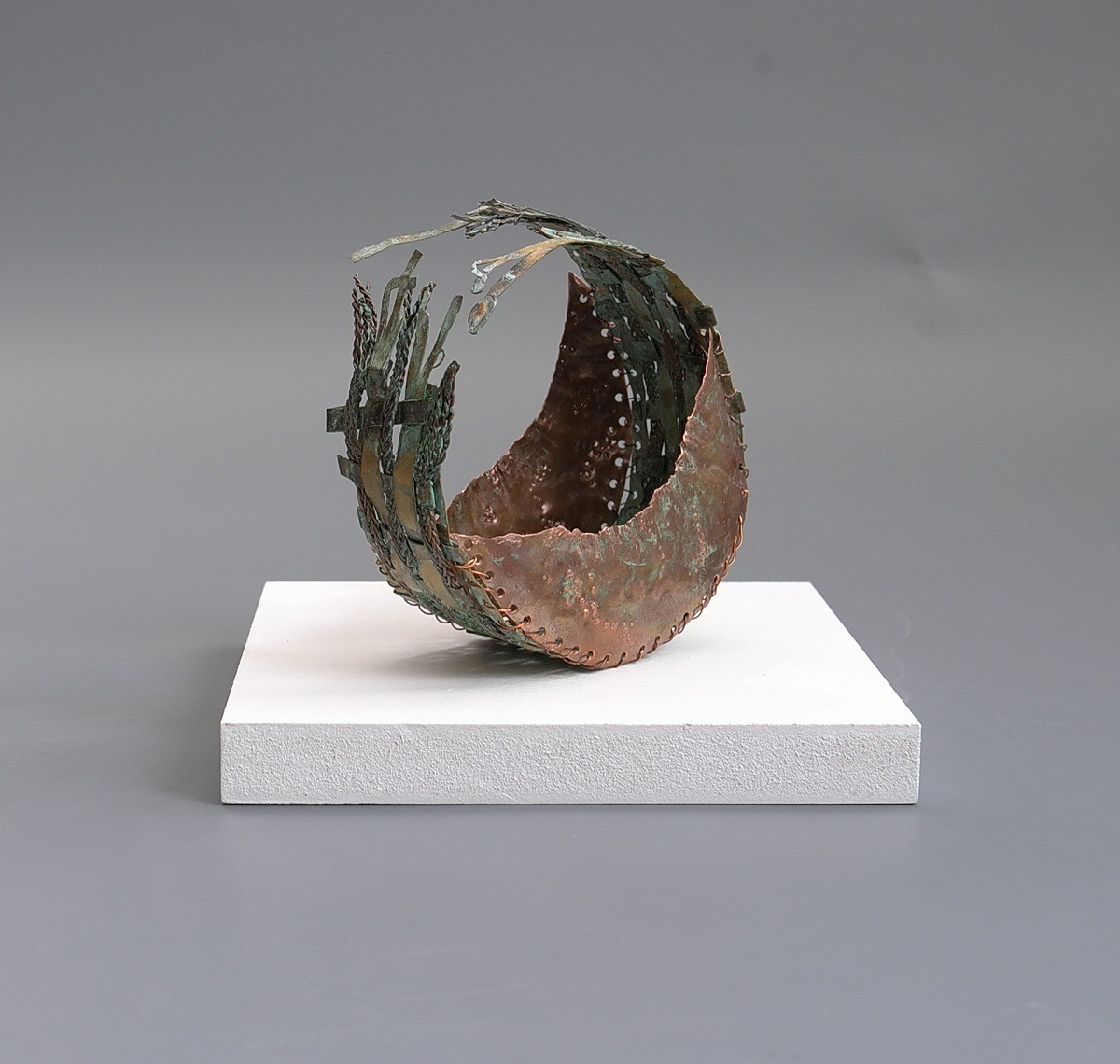
Tell us a bit about your chosen techniques and how you use them
I work primarily with wire and sheet metal, sculpting vessels and forms from crocheted and woven fabric.
The process starts with a fine gauge wire which is then woven on a loom by hand, creating a malleable fabric.
I manipulate this material into its sculptural form. In the beginning, I often have a fixed concept, but the repetitive motion of the weaving is very relaxing and allows my thoughts to grow and develop into new ideas.
I adopt shapes borrowed from unearthed objects in an intuitive way and apply patinas to the surfaces of the metal. I like to leave warped wire threads hanging loosely, to convey deterioration and corrosion.
I combine line, form, colour and texture to give an impression of something ancient, almost decayed. It is this sense of fragility, a thread of the past, which is so evocative.
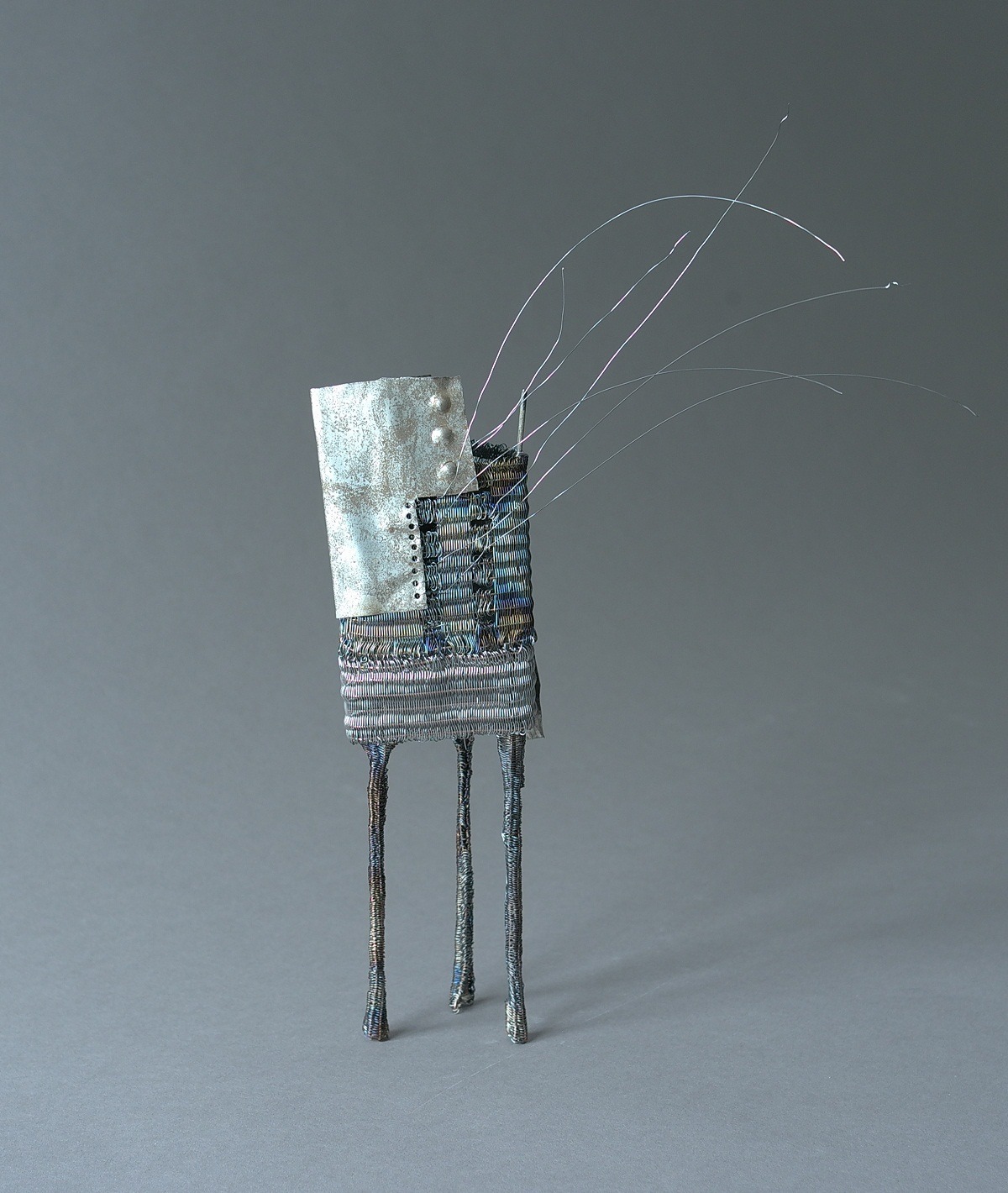
What currently inspires you?
Inspiration comes from all angles. I love the interlacing together of colour, texture and form.
I study archaeological finds and faded and encrusted surfaces on shipwrecks. I look for ceremonial tribal costumes and headdresses and am attracted to the use of layered shells, feathers and grasses. They create wonderful traditional displays that intoxicate our senses, showing us the natural world through the eyes of ancient tribal culture. This is something we have almost completely lost in the western world.
Recently I have taken inspiration from other artists. Lynn Chadwick’s robust figurative sculptures intrigue me as I cannot quite make out the subjects. They are magical and mysterious, with a language of their own.
The tribal jewellery of Alexander Calder and the iconic sculptures of Barbara Hepworth also inspire me. Their use of surface pattern, patina and form have led me to further explore my own techniques.
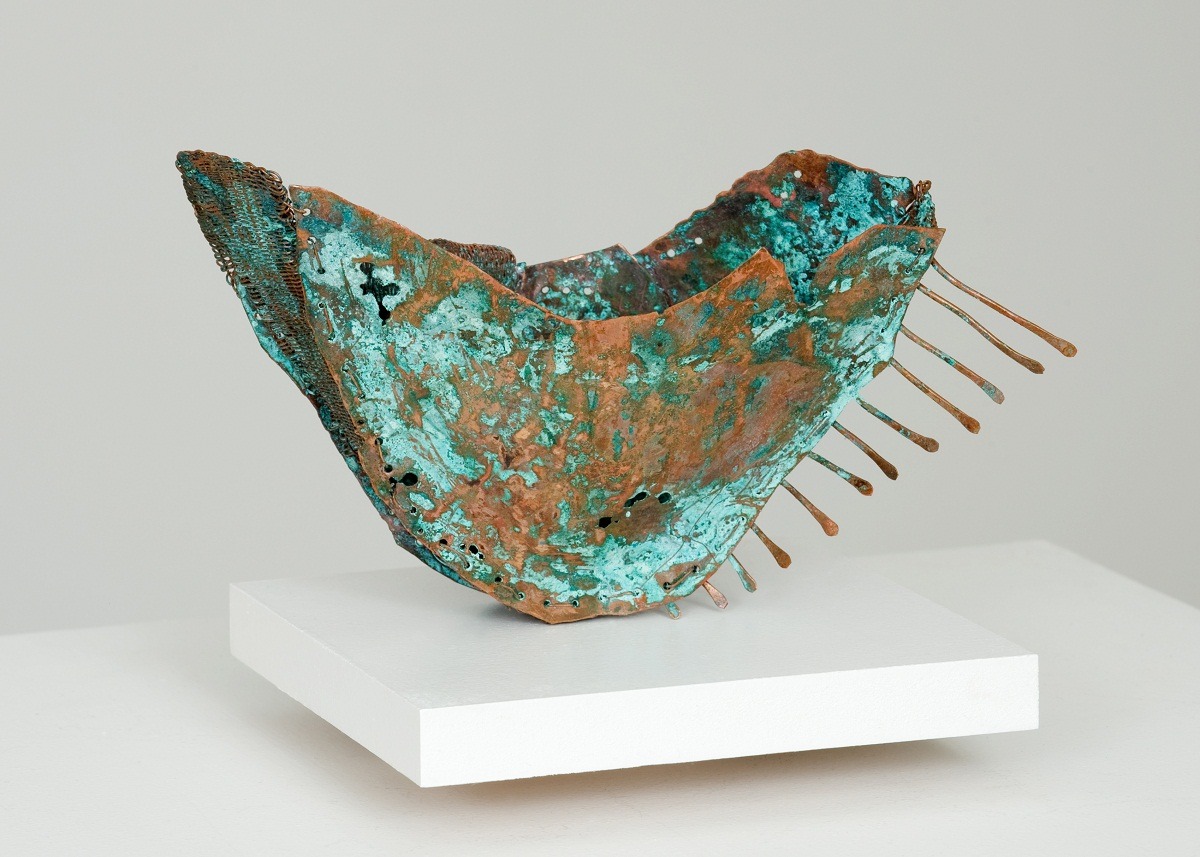
Moving on from copper objects to larger scale bronze sculpture
Tell us about a piece of your work that holds particularly fond memories and why?
The work ‘Expiscor’ (2013), was the first time I incorporated woven wire and sheet copper. I used new methods of construction to give the sculptures a less fragile quality. The surface texture contains a new essence of delicacy and sense of time passing.
‘Expiscor’ conveys and reflects the texture and colours under the sea. It is stitched together and shaped to evoke archaeological finds with faded patinas or shipwreck remains. It includes elements of clinker-built ships, with oars coming out from either side. It expresses distant, faded memories of time gone by; captured but so easily lost forever.
It is a piece I have fond memories of and it is now in a private collection.
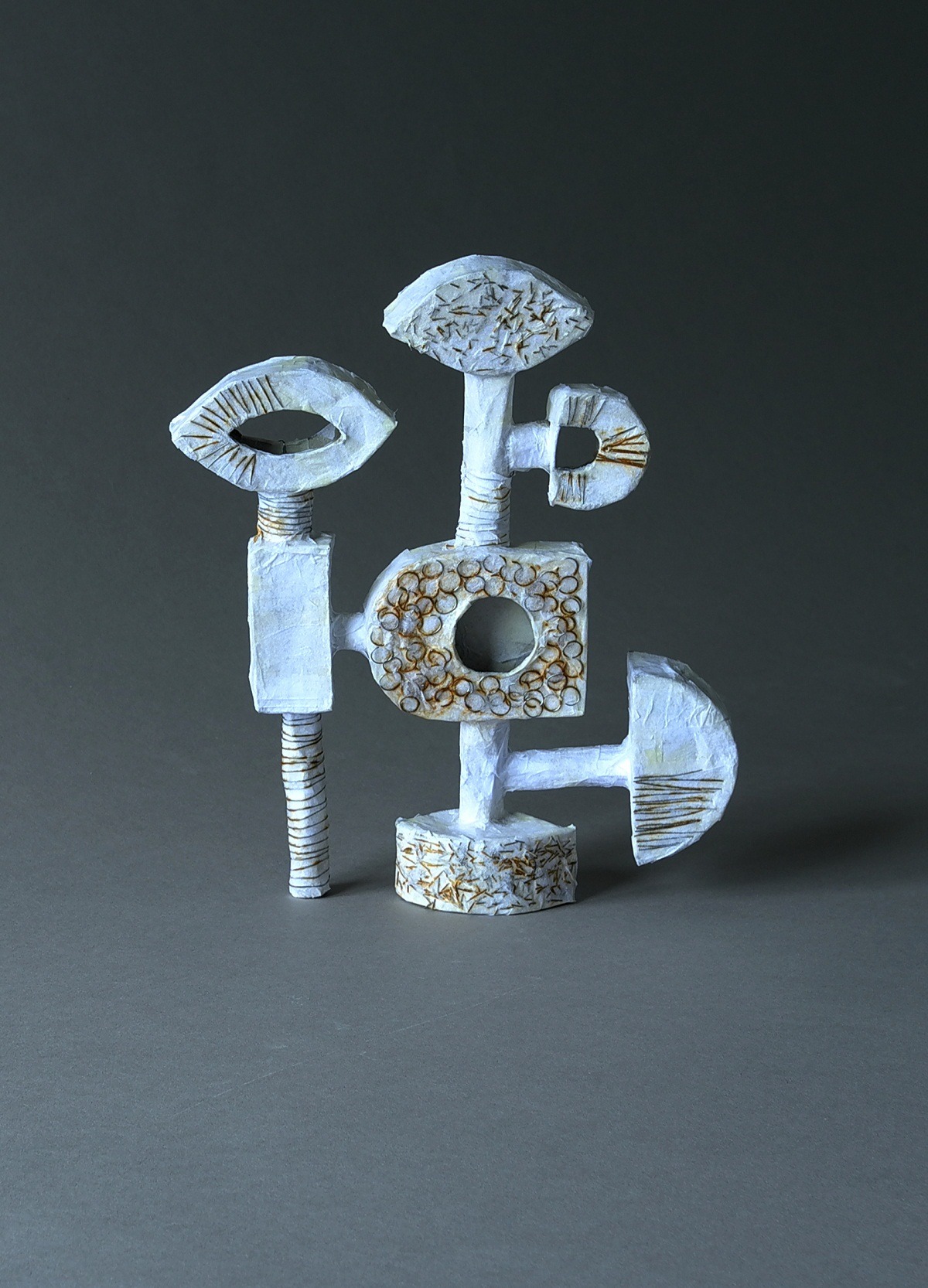
How has your work developed since you began and how do you see it evolving in the future?
Recently I have been making paper and card models (maquettes) and although no textile techniques are involved, I cannot stop myself from applying decorative designs to the surfaces, as if they were printed or textured fabrics. I have been adding colour, rusts and textures, incorporating wire or simply drawing on my designs with a felt tip pen. Many of these maquettes have become artworks in themselves.
At present, I am working on the idea of moving the flexibility of line and weave into a more substantial medium.
Bronze casting may well be the best path to investigate. Having a cardboard maquette makes the potential of using a burnout process for mould-making possible, compared to taking a cast from a textile metal fabrication.
Bronze, like copper, reacts to certain chemicals giving the opportunity to create a multitude of marks and interesting patinas on the surface.
Bronze casting could open up the possibility of working to a much larger scale. Time will tell.
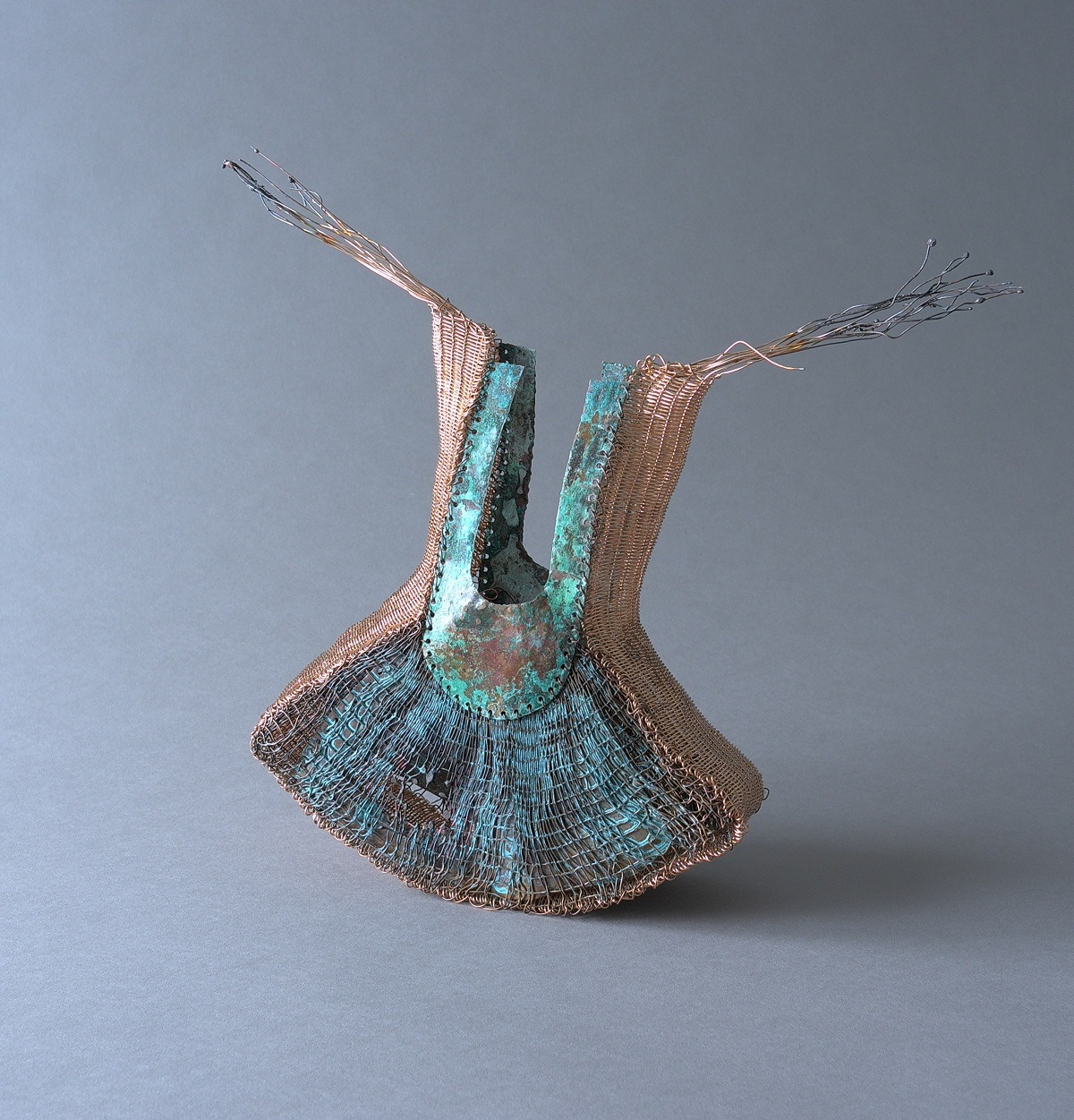
What advice would you give to an aspiring textile artist?
My advice is to carry on learning and appreciating new processes, whether textile-based or not. Broaden your skills and ideas and keep on making art.
Don’t get worried about making money or being successful, as this can set back your creative flow.
Do what you feel is right and don’t get side-tracked with current trends. Be honest with yourself.
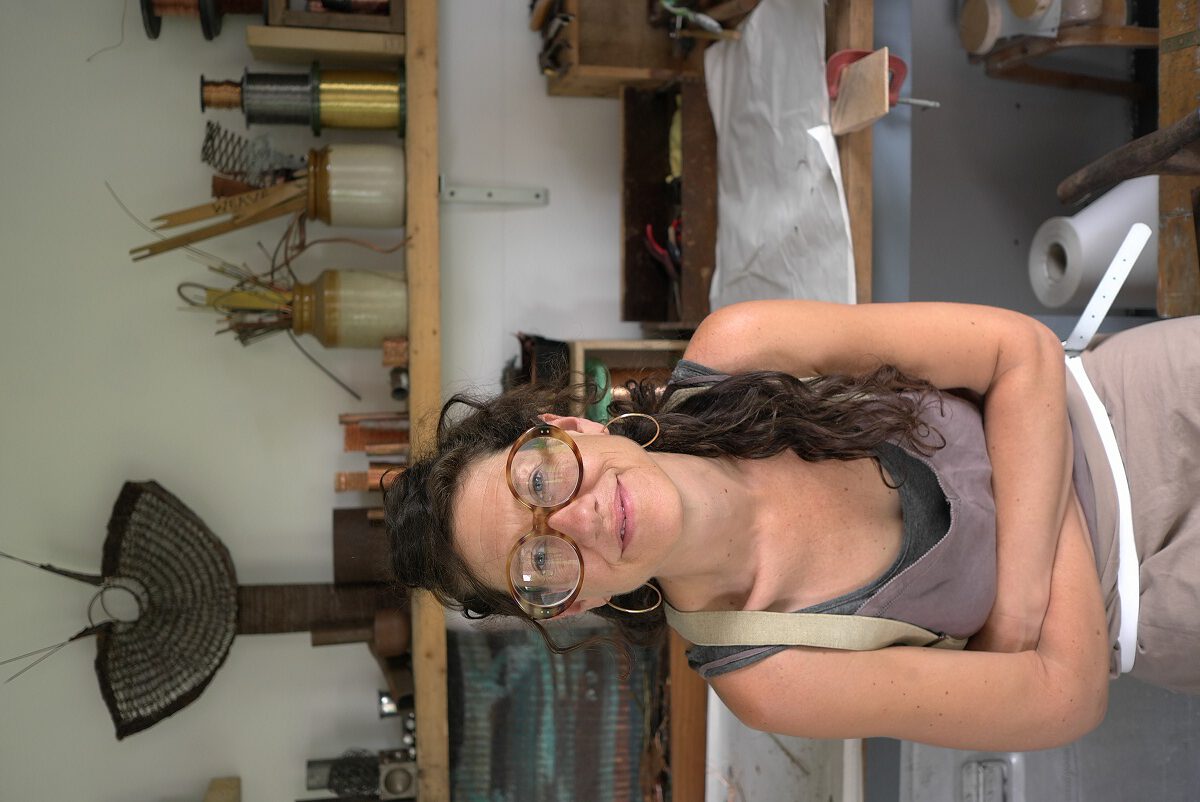
For more information visit www.kietajackson.com
Let us know what you like best about Kieta Jackson’s sculptures by leaving a comment below
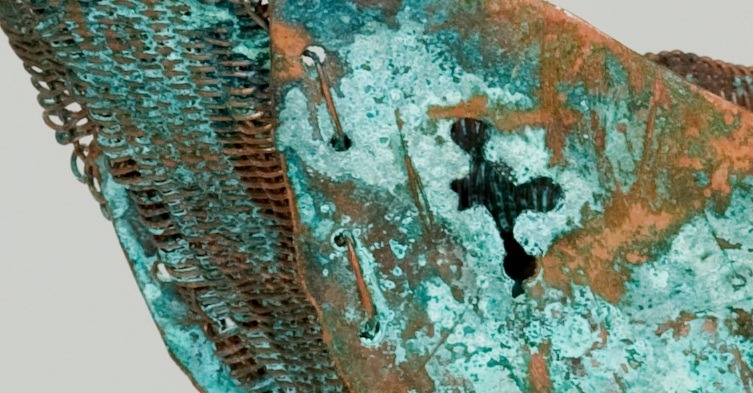

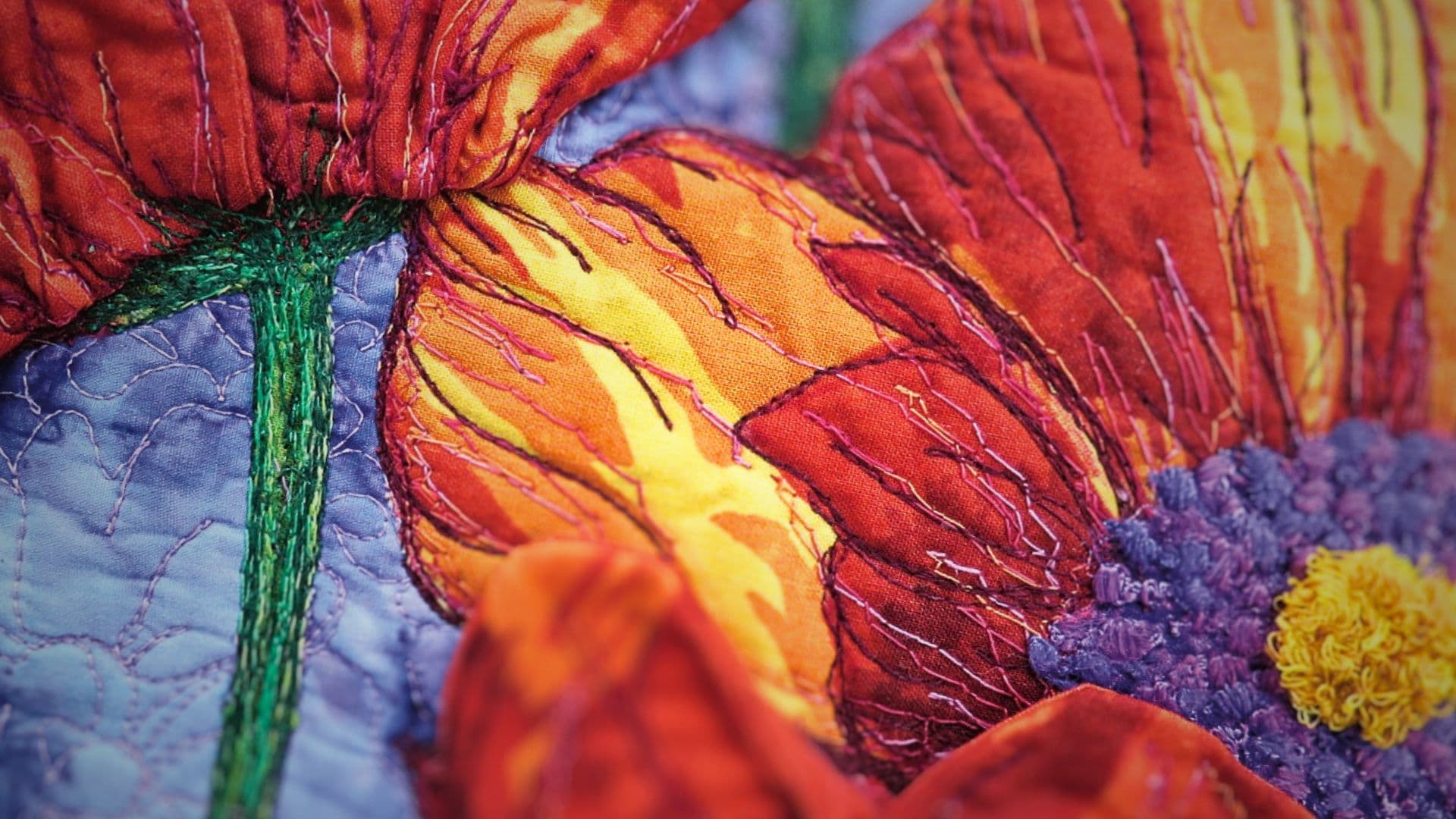
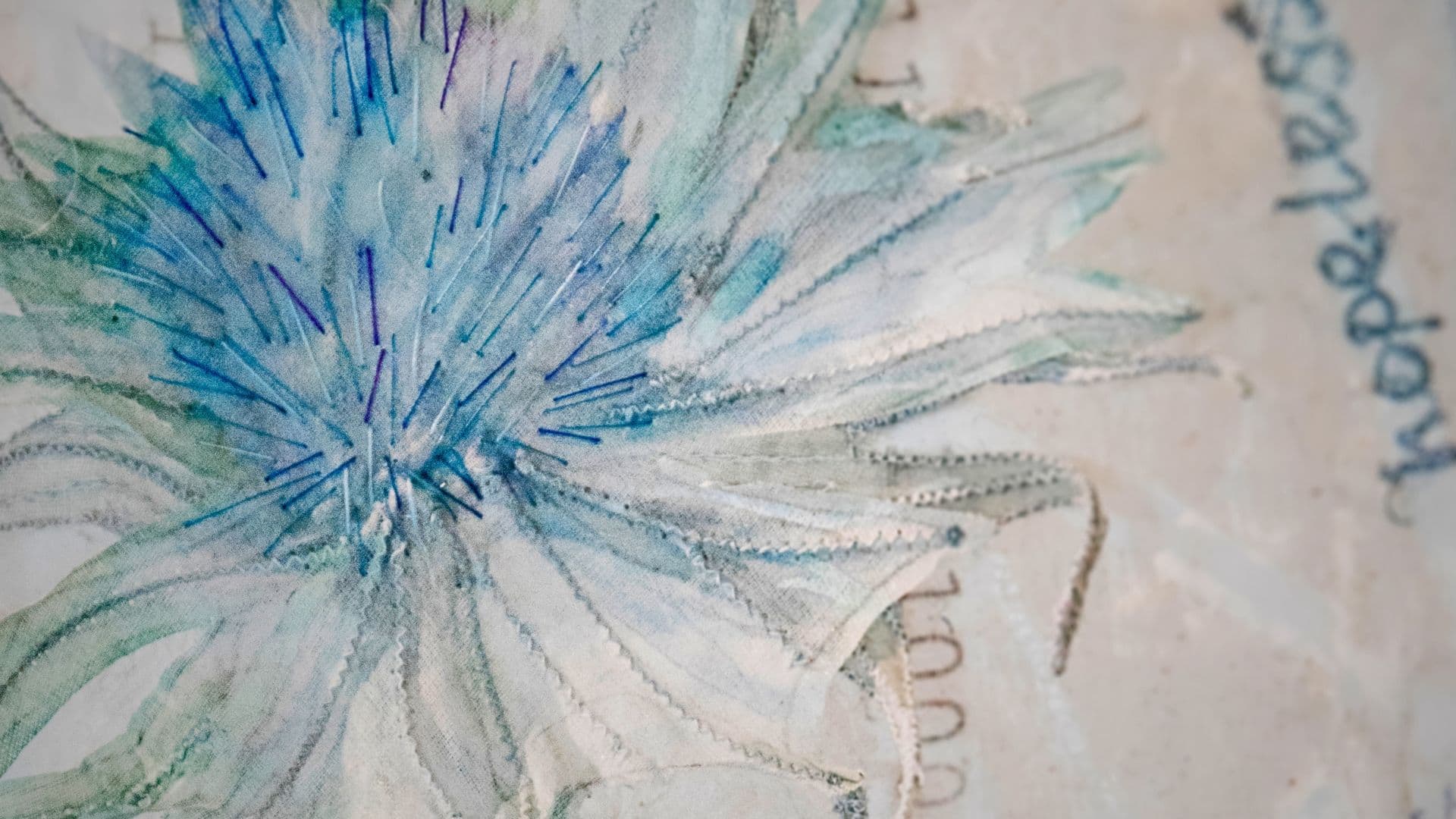
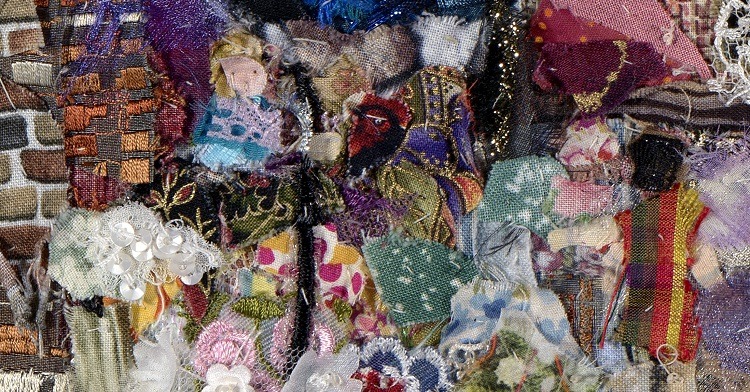
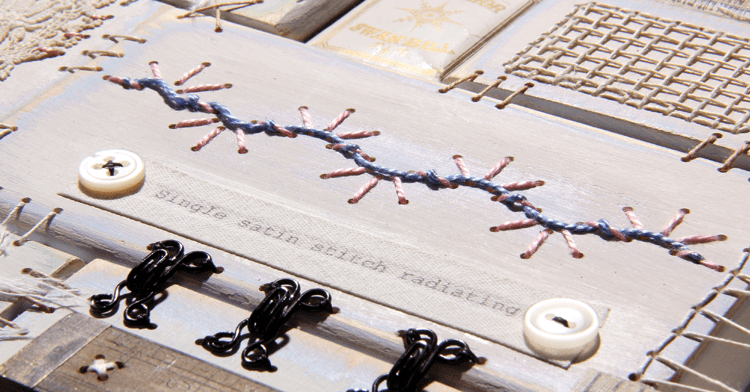
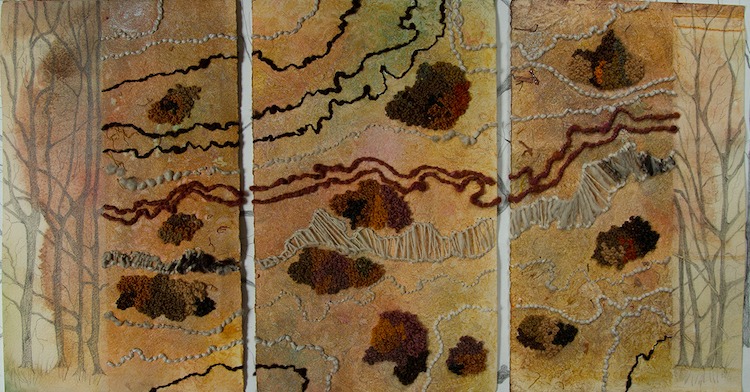
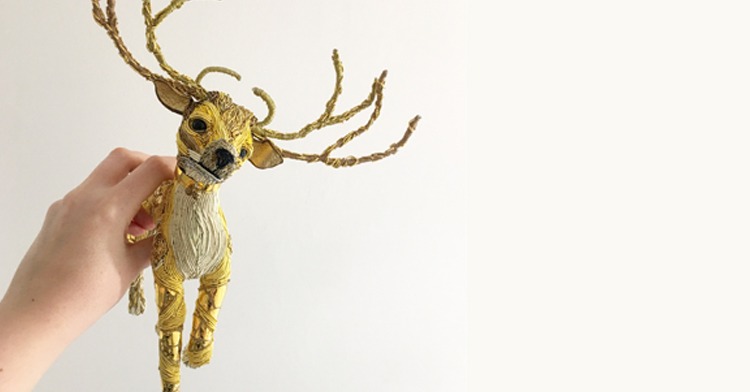
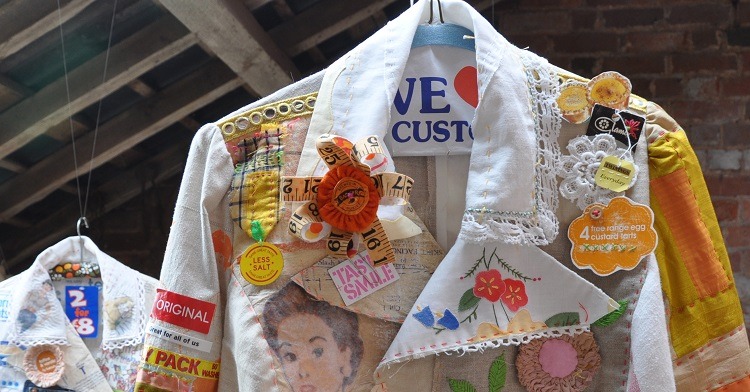
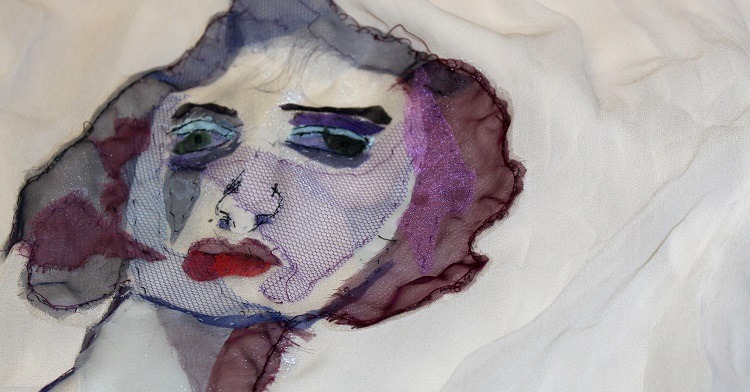
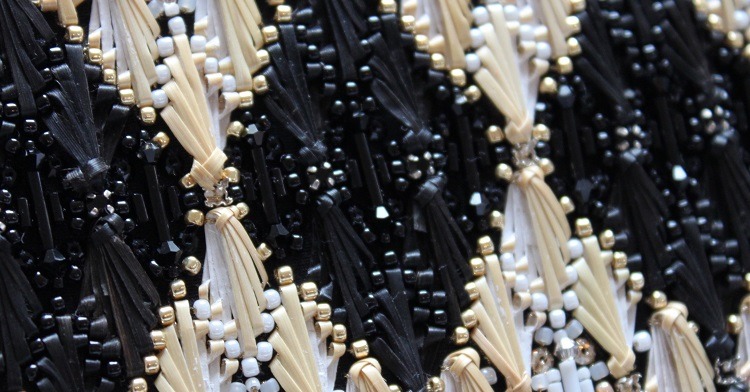
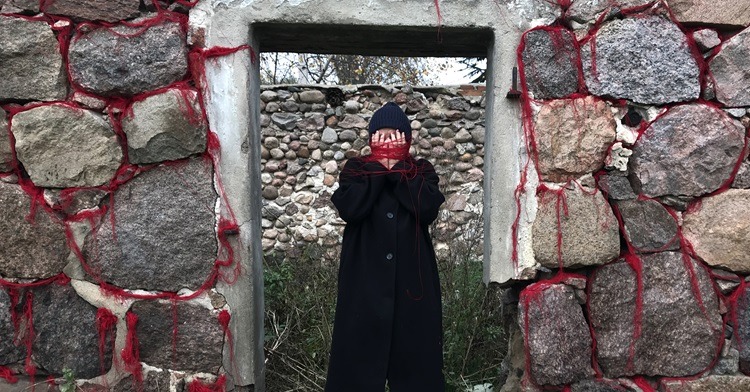
10 comments
JANET PELL
What a wonderful inspiration I also love working in the materials she uses and her creations are beautiful. I am also a painter and her work excited me with so many ideas into where my own work could be developed.
Maeve Hunter
Love this work. Its so tactile
Linda Carswell
I love the mixture of materials and textures in what appear to be fragile 3D forms [yet surely stronger than the various threads I have been working with lately]; keep on experimenting!
Linda Lomahaftewa
Inspirational
Barbara Richards
I love the allusions without being too specific to archaeology and her skill in using the material to express unusual propositions about antique artifacts.
Rita Praets
Very Original!
Monique
Fascinating
Sherron Pampalone
Amazing work!!!!
Lila reid
Very inspirational article
Stephanie Christenson
Wonderful work, beautifully realized. I love how she continually evolves in her approach and materials and is open to new ideas as she weaves her metal. Alll of her pieces are amazing, but Expiscor is gorgeous wiith its patina, aging, and balanced form. Wow! Thank you for sharing!